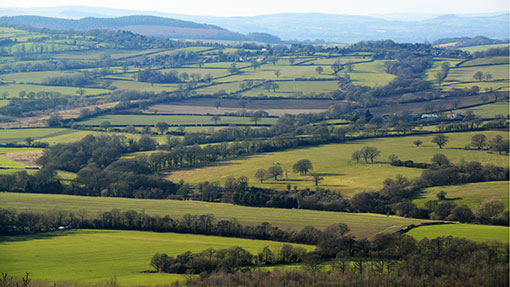Pitfalls to avoid when buying agricultural land

Buying any property can be a risky process but agricultural land has its own pitfalls which set it apart from commercial and residential property. Here are the key dangers to avoid in a transaction, writes Christopher Hordern, partner at Thrings Solicitors.
Title
While some farmland has registered title there are still large areas of predominantly rural land which are not registered. Unregistered title can require a more in-depth investigation to check if the property is affected by covenants from any past dealings.
 Christopher Hordern
Christopher HordernPartner, Thrings Solicitors
Your solicitor should check whether all old documents (from before the land was registered) are available, and then check them for extra details which might not have been carried over into the registered title.
Boundaries
These should be checked on the ground to ensure the legal title matches what is being offered in the sale particulars and the features on the ground.
Maintenance responsibilities are often not given on Land Registry titles but can be shown on the old preregistration deeds. These are often not available until completion but standard precontract questions should be raised about boundaries and responsibility for maintenance.
Where a new boundary is to be created, this should be marked out on the ground when you inspect the farm or land and clear provisions agreed with the seller on what type of boundary is to be established, by whom and by when. The sale brochure should also detail where new boundaries are to be established.
Access
The property should either adjoin a public highway (one allowing vehicular use) or there should be clear rights of access in the title over other land to a public highway.
To some extent this will be revealed by Highways Authority searches, but where private rights of way are included, the routes should be referred to in the sale brochure and cover the existing and proposed property uses. Rights of way will be confirmed in the title document.
Use
Check that the property’s existing uses are correctly authorised or are sufficiently long-standing not to be challenged by the local authority.
If your proposed use is different, check this is covered or if consent is required. Ensure your solicitor is aware of any plans for different uses and, if necessary, talk to a local planning officer.
Planning
Do any permissions affect the land? Most local authorities now have properties’ recent planning history online.
If any building is listed, this will affect your ability to make changes to it and its “curtilage” (generally the surrounding area that is used privately).
Also check for conservation areas, which impose additional planning restrictions.
Occupation
Who occupies farmhouses and farmland – if any is not occupied by the seller, then on what terms is it let? Oral agreements about when tenants will vacate are common – don’t always expect them to be honoured.
Some tenancies have security of tenure for several generations, others have little or none. Ask for full details and how long the agreement has been in place. This will affect whether the tenant is covered by the Agricultural
Tenancies Act (1995) or the Agricultural Holdings Act (1986) – the latter gives more security of tenure. The selling agent should make copies of tenancy agreements available for inspection.
Environment considerations
Ensure you know what you need to comply or deal with, including Single Payment Scheme (SPS)/Basic Payment Scheme (BPS) requirements, new greening measures, environmental schemes such as Entry Level Stewardship (ELS)/Higher Level Stewardship (HLS), pollution control systems, building materials such as asbestos and old dumps.
Clawback/overage
Land near built-up areas may have development potential and a seller may wish to share in part of the increase in land value if it is developed in the future.
This can be achieved through a clause in the sale terms known as clawback or overage.
Any potential arrangement should be disclosed by the selling agent before an offer is made for the land as they can affect the land’s value. You should be clear of the basis on which your offer to buy the land is made.
Generally, clawback rates range between 25% and 50% of the uplift in value accruing when planning permission is achieved, applicable for 20 to 50 years. If the clawback is particularly high, look to negotiate this with the seller as it could hamper development.
Grants and subsidies
Don’t assume SPS/BPS entitlements are included in the sale. Schemes such as ELS, HLS, organic certification and woodland grant schemes will often continue for a number of years after the purchase. Their existence should be disclosed as part of the sale.
Public rights of way
The existence of public rights of way should be checked by inspecting the definitive map held by the council prior to agreeing a purchase.
Land next to residential areas may have been used by local people to walk dogs or for other recreational purposes. If this has happened for a sufficient time, it is possible that a village green application on the land could be made.
Look for signs of use and ask questions of the seller.
